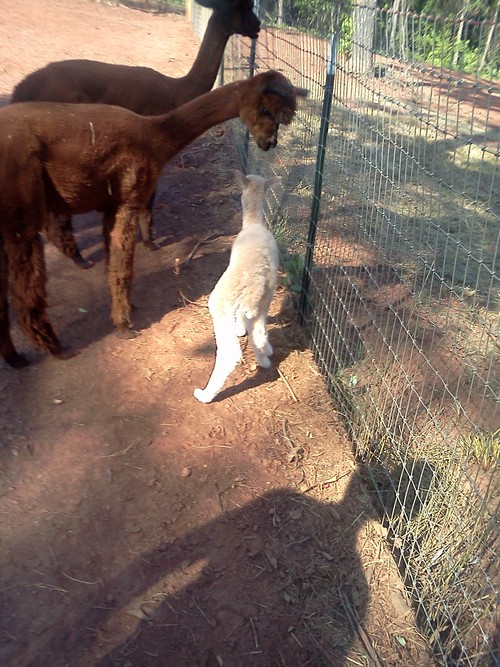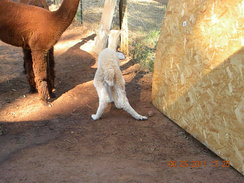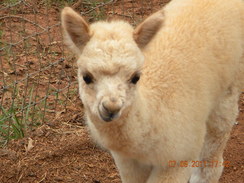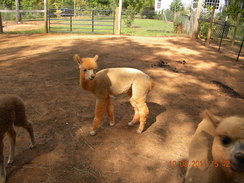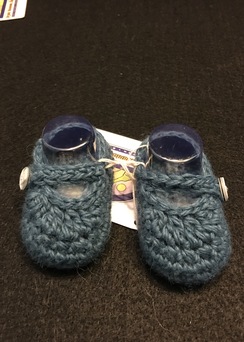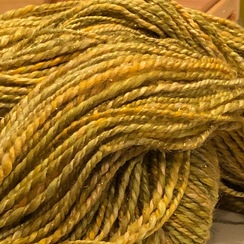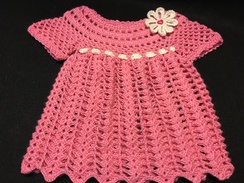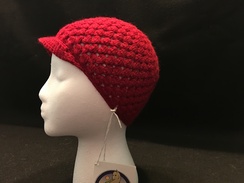A Cria's Story
Friday, January 4, 2013
Anyone who has been in the business of breeding and raising alpacas will know what I mean when I talk about the excitement and anticipation that leads up to the birth of a new cria. It’s one of those feelings that never really go away whether this is your first cria or your last. Well, this particular one was number three for us.
We had purchased two females; one was an old pro who had given birth over and over with no issues, the other her yearling daughter. Finally our little one reached the ripe old age of two. She had grown into a big girl with nice long legs and a sturdy body. She was mature and healthy and ready to be a mommy. We took our time deciding which male would be allowed to pollinate our little flower and came up with the perfect match. We checked the calendar to pick the optimal day for breeding, spent weeks afterward tormenting one of the boys to see if our girl would spit at him, and finally had the pregnancy confirmed by ultrasound. Now began the waiting. As fast as time was flying by in our personal lives, it seemed to slow to a crawl down at the barn. Spring flowed into summer, summer drug into fall, fall slid into winter, and finally winter gave way once more to spring. Thus began the watching for those slight changes in our girl that might tell us that she is ready to give birth. Days spent watching and waiting; afraid to leave home less the blessed event take place and we are not there to help. Day 350, which is supposed to me the magic day, comes and goes. So does 355, 356, 357, and 358…
The morning of day 359 dawned warm and sunny. We dragged ourselves out of bed on this Saturday morning with a purpose in mind for the day. Our son and his wife were moving to South Carolina and taking our new grandson with them. We absolutely MUST help them move; not because they really needed our help, but because as the grandmother in this equation I MUST be able to see where they are going to be living so that I will be able to find them when (not if) they need me. And so, as with every other day in the lives of alpaca farmers, we headed to the barn at the crack of dawn to feed grain, refill hay bins, refresh water buckets, and scoop the ever-multiplying poop piles.
No sooner had we gotten to the barn and started feeding, we noticed that our girl wasn’t acting right….nothing we could really put our finger on…just not right. As our chores continued and the morning started heating up, we realized that our little girl really was in labor! Okay, everyone knows that alpaca labor doesn’t take more than a couple of hours or so (yeah right! And they always poop in piles and they never give birth at night, but those are different stories for another day!). There is no reason why we can’t get this little one on the ground and nursing and still make our date with the kids, right? Wrong.
It wasn’t long before we started seeing some real activity around the rear end of our girl. In no time at all we were blessed with a sight that alpaca breeders everywhere pray for; a nose and two feet. I always giggle a little at the thought of that little nose and mouth sticking out with the tongue just agoin’ and the nostrils flaring…but I digress. So everything is moving along according to plan. Within just a few minutes the little one is born. He slithers out of his nice warm home of almost a year in all his gooey glory looking for all intents and purposes like a big bundle of sticks with ears. At this point we are making record time. Just a few minutes to get him cleaned up a little, take his temperature, dip his navel a few times, and get him up walking; then in no time he will be nursing and we can be on our way, right? Wrong again.
We cleaned him up, took his temperature (a little low at 99.8, but nothing too alarming), dipped his navel one, two, three times and sat back to wait for him to get up so that he could nurse. Now I am not a patient person. I hate having to wait for anything, but watching a new cria makes the waiting much easier…or it does when everything works right. As we sat there watching this little guy and waiting, and waiting, and waiting some more for him to get up, we began to suspect that something might be wrong. Neither of us was willing to say anything out loud at this point. I think we were hoping that it was just our imagination and if we didn’t say anything it would just go away. Finally, he started trying to get up only to end up in a heap, nose first into the ground. Looking back on it now, it was actually quite funny watching him try to stand up when his back feet where standing on his front ones. At the time laughter was the last thing on our minds or in our hearts. We did everything we could to help him stand, but the end result was always the same; he would stand for only seconds before his legs would fold up under him like spaghetti noodles and send him rolling in the dirt. The time for trying to pretend that he was normal had passed and we knew that if he couldn’t stand to nurse, we had to take over.
Now our little female was completely bewildered by the entire situation and more than a little freaked out by it all. That was nothing compared to her dismay when we pinned her against the stall and began milking her in an attempt to get some of her extremely important colostrum into a bottle so that we could feed it to the little guy. The next few hours are a blur of milking mom and feeding cria until somewhere around noon we realized a couple of things. First, we were not going to make it to help the kids move and secondly (and most importantly) we were about five hours into this whole thing and our girl had still not passed the placenta. Now we were worried about both of our patients and had no idea what else we could do for either. So we did what we probably should have thought to do hours earlier; we called our vet.
After the inevitable series of “Yes, I will hold,” and elevator music our vet finally finishes with the patient she is working on and comes to the phone. We explain to her what is going on with the cria’s legs and hold our breath praying all the while that she doesn’t mention spinal damage or anything that nears the possibility of having to put our new little one down. Thankfully, our vet is a very special young woman who not only knows how to treat animals, she also knows how to love them and she does so freely and without reserve. She immediately began listing things other than a damaged spine that could cause his legs to do what they were doing. She did her best to assure us that she REALLY did think that his problem was most likely just some loose joints and tendons that would strengthen with time. She told us to continue to get what colostrum we could from mom and supplement with milk loaded with full fat yogurt to keep the little guy’s energy up so that he would be able to work the tendons and ligaments that needed to be worked. She promised to come out on Monday to check him over first hand and told us to call if anything happened before that time.
She also said that at this point, the mom might be our bigger issue. As it turns out retained placenta is a fairly common ailment among new alpaca moms, but it can lead to infection which can be dangerous and it needs to be treated. Since she had office duty that weekend, she asked one of the other vets in her practice to come out to our farm to take care of the retained placenta. This vet knew little to nothing about camelids but agreed to give it a try anyway. He arrived at our farm, introduced himself, gave the mom a shot of Oxytocin, walked back up to his truck to get an antibiotic wash for her uterus, and before he could get back to the barn the placenta had delivered completely intact and healthy. Whew! That was one bullet dodged.
So, here we are on a sunny Saturday afternoon looking at precious new born cria who is depending on us to keep him alive until he is strong enough to nurse as he should. It was going to be a long, long time until Monday. Every hour on the hour we milked mom and fed cria and then followed up with yogurt filled milk. Slowly, the little guy seemed to be gaining some strength and he began to take a couple of extremely wobbly steps at a time. I have to tell you that as ugly as those first steps were, we couldn’t imagine anything more beautiful at the time. Unfortunately, he was so unstable on those little stilts that he had for legs that he still could not stand long enough to nurse so the bottle feeding had to continue around the clock.
On Monday the vet arrived in the early afternoon and immediately had good news and bad news to share. The good news was that she was more certain than ever that our little boy only had what is known as “windswept” legs which happens when the cria is positioned awkwardly or doesn’t have enough room in the uterus so the muscles, ligaments, and tendons do not get the exercise that they need to make them strong. Thankfully, this condition usually corrects itself with time as long as the cria is able to keep its strength up enough to exercise.
The bad news was that he also had a condition called Patent Urachus. After she was able to overcome her shock at seeing the first case of the condition she had ever heard of in an alpaca, she went on to explain that the umbilical cord contains different tubes to carry different things back in forth from the mother to the cria. The tube that carries waste in the form of urine from the cria to the mother to be disposed of is called the Urachus. Usually the Urachus closes on its own during the birth process, but for some reason our little boy’s did not close up so he was actually urinating from his umbilicus instead of his penis. She tied a piece of suture around it as tight as possible in hopes that it would close up on its own and told us to watch it closely.
So now we have a newborn cria to feed and try to keep strong enough to exercise who just happens to have an open tube that leads straight into his bladder which is a constant risk for infection. We did it all; the milking of mom, the bottle feedings, the cleaning of the umbilicus, and the praying. Still, by Tuesday evening our little one was visibly weaker and nothing that we did seemed to help. We called the vet and she immediately advised a plasma transfusion as soon as possible. She made an appointment to meet her at her office at 8:00 the next morning; the catch was that she didn’t have the plasma that we needed and neither did we…as it turned out, neither did the first half dozen farms we called looking for it. In this case persistence finally paid off and we found one about an hours’ drive away.
We got up bright and early the next morning so that we could leave home in time to get the plasma and get back to the vet by eight. By this time our little cria was so weak that he rode in my lap in the front seat. We arrived at the clinic where all of the nurses and other patients made a huge fuss over our adorable little guy. Once we were in our room the vet had us lay him out on the exam table where she gave him an antibiotic shot and a mild sedative. She then shaved a spot on his abdomen and inserted a needle straight into the abdominal cavity so that the organs were actually bathed in the rich plasma. Once that was done she used silver nitrate sticks to cauterize the umbilicus. The entire process was done in under an hour and we were on our way home.
As soon as we got home we reunited the cria with his mother and went in the house to warm his next bottle. Sometime during the process of making and warming the bottle, my husband happened to look out the window and there he saw proof that miracles do happen. Not only was our little guy standing up on his still wobbly legs; he was nursing!!!!!
From that moment forward his progress was nothing short of amazing. Within a couple of weeks he was able to run and play with the other crias. Our little guy is just over three months old now and the only sign of his rough start in life is a very slight curve in his spine right at his tail. The vet has said that she thinks that too will go away with time and we hope it does, but all that really matters now is that the little one that we were once afraid might have to be put down is now strong, healthy, and the biggest rascal of the group.
---Melissa Hall---
We had purchased two females; one was an old pro who had given birth over and over with no issues, the other her yearling daughter. Finally our little one reached the ripe old age of two. She had grown into a big girl with nice long legs and a sturdy body. She was mature and healthy and ready to be a mommy. We took our time deciding which male would be allowed to pollinate our little flower and came up with the perfect match. We checked the calendar to pick the optimal day for breeding, spent weeks afterward tormenting one of the boys to see if our girl would spit at him, and finally had the pregnancy confirmed by ultrasound. Now began the waiting. As fast as time was flying by in our personal lives, it seemed to slow to a crawl down at the barn. Spring flowed into summer, summer drug into fall, fall slid into winter, and finally winter gave way once more to spring. Thus began the watching for those slight changes in our girl that might tell us that she is ready to give birth. Days spent watching and waiting; afraid to leave home less the blessed event take place and we are not there to help. Day 350, which is supposed to me the magic day, comes and goes. So does 355, 356, 357, and 358…
The morning of day 359 dawned warm and sunny. We dragged ourselves out of bed on this Saturday morning with a purpose in mind for the day. Our son and his wife were moving to South Carolina and taking our new grandson with them. We absolutely MUST help them move; not because they really needed our help, but because as the grandmother in this equation I MUST be able to see where they are going to be living so that I will be able to find them when (not if) they need me. And so, as with every other day in the lives of alpaca farmers, we headed to the barn at the crack of dawn to feed grain, refill hay bins, refresh water buckets, and scoop the ever-multiplying poop piles.
No sooner had we gotten to the barn and started feeding, we noticed that our girl wasn’t acting right….nothing we could really put our finger on…just not right. As our chores continued and the morning started heating up, we realized that our little girl really was in labor! Okay, everyone knows that alpaca labor doesn’t take more than a couple of hours or so (yeah right! And they always poop in piles and they never give birth at night, but those are different stories for another day!). There is no reason why we can’t get this little one on the ground and nursing and still make our date with the kids, right? Wrong.
It wasn’t long before we started seeing some real activity around the rear end of our girl. In no time at all we were blessed with a sight that alpaca breeders everywhere pray for; a nose and two feet. I always giggle a little at the thought of that little nose and mouth sticking out with the tongue just agoin’ and the nostrils flaring…but I digress. So everything is moving along according to plan. Within just a few minutes the little one is born. He slithers out of his nice warm home of almost a year in all his gooey glory looking for all intents and purposes like a big bundle of sticks with ears. At this point we are making record time. Just a few minutes to get him cleaned up a little, take his temperature, dip his navel a few times, and get him up walking; then in no time he will be nursing and we can be on our way, right? Wrong again.
We cleaned him up, took his temperature (a little low at 99.8, but nothing too alarming), dipped his navel one, two, three times and sat back to wait for him to get up so that he could nurse. Now I am not a patient person. I hate having to wait for anything, but watching a new cria makes the waiting much easier…or it does when everything works right. As we sat there watching this little guy and waiting, and waiting, and waiting some more for him to get up, we began to suspect that something might be wrong. Neither of us was willing to say anything out loud at this point. I think we were hoping that it was just our imagination and if we didn’t say anything it would just go away. Finally, he started trying to get up only to end up in a heap, nose first into the ground. Looking back on it now, it was actually quite funny watching him try to stand up when his back feet where standing on his front ones. At the time laughter was the last thing on our minds or in our hearts. We did everything we could to help him stand, but the end result was always the same; he would stand for only seconds before his legs would fold up under him like spaghetti noodles and send him rolling in the dirt. The time for trying to pretend that he was normal had passed and we knew that if he couldn’t stand to nurse, we had to take over.
Now our little female was completely bewildered by the entire situation and more than a little freaked out by it all. That was nothing compared to her dismay when we pinned her against the stall and began milking her in an attempt to get some of her extremely important colostrum into a bottle so that we could feed it to the little guy. The next few hours are a blur of milking mom and feeding cria until somewhere around noon we realized a couple of things. First, we were not going to make it to help the kids move and secondly (and most importantly) we were about five hours into this whole thing and our girl had still not passed the placenta. Now we were worried about both of our patients and had no idea what else we could do for either. So we did what we probably should have thought to do hours earlier; we called our vet.
After the inevitable series of “Yes, I will hold,” and elevator music our vet finally finishes with the patient she is working on and comes to the phone. We explain to her what is going on with the cria’s legs and hold our breath praying all the while that she doesn’t mention spinal damage or anything that nears the possibility of having to put our new little one down. Thankfully, our vet is a very special young woman who not only knows how to treat animals, she also knows how to love them and she does so freely and without reserve. She immediately began listing things other than a damaged spine that could cause his legs to do what they were doing. She did her best to assure us that she REALLY did think that his problem was most likely just some loose joints and tendons that would strengthen with time. She told us to continue to get what colostrum we could from mom and supplement with milk loaded with full fat yogurt to keep the little guy’s energy up so that he would be able to work the tendons and ligaments that needed to be worked. She promised to come out on Monday to check him over first hand and told us to call if anything happened before that time.
She also said that at this point, the mom might be our bigger issue. As it turns out retained placenta is a fairly common ailment among new alpaca moms, but it can lead to infection which can be dangerous and it needs to be treated. Since she had office duty that weekend, she asked one of the other vets in her practice to come out to our farm to take care of the retained placenta. This vet knew little to nothing about camelids but agreed to give it a try anyway. He arrived at our farm, introduced himself, gave the mom a shot of Oxytocin, walked back up to his truck to get an antibiotic wash for her uterus, and before he could get back to the barn the placenta had delivered completely intact and healthy. Whew! That was one bullet dodged.
So, here we are on a sunny Saturday afternoon looking at precious new born cria who is depending on us to keep him alive until he is strong enough to nurse as he should. It was going to be a long, long time until Monday. Every hour on the hour we milked mom and fed cria and then followed up with yogurt filled milk. Slowly, the little guy seemed to be gaining some strength and he began to take a couple of extremely wobbly steps at a time. I have to tell you that as ugly as those first steps were, we couldn’t imagine anything more beautiful at the time. Unfortunately, he was so unstable on those little stilts that he had for legs that he still could not stand long enough to nurse so the bottle feeding had to continue around the clock.
On Monday the vet arrived in the early afternoon and immediately had good news and bad news to share. The good news was that she was more certain than ever that our little boy only had what is known as “windswept” legs which happens when the cria is positioned awkwardly or doesn’t have enough room in the uterus so the muscles, ligaments, and tendons do not get the exercise that they need to make them strong. Thankfully, this condition usually corrects itself with time as long as the cria is able to keep its strength up enough to exercise.
The bad news was that he also had a condition called Patent Urachus. After she was able to overcome her shock at seeing the first case of the condition she had ever heard of in an alpaca, she went on to explain that the umbilical cord contains different tubes to carry different things back in forth from the mother to the cria. The tube that carries waste in the form of urine from the cria to the mother to be disposed of is called the Urachus. Usually the Urachus closes on its own during the birth process, but for some reason our little boy’s did not close up so he was actually urinating from his umbilicus instead of his penis. She tied a piece of suture around it as tight as possible in hopes that it would close up on its own and told us to watch it closely.
So now we have a newborn cria to feed and try to keep strong enough to exercise who just happens to have an open tube that leads straight into his bladder which is a constant risk for infection. We did it all; the milking of mom, the bottle feedings, the cleaning of the umbilicus, and the praying. Still, by Tuesday evening our little one was visibly weaker and nothing that we did seemed to help. We called the vet and she immediately advised a plasma transfusion as soon as possible. She made an appointment to meet her at her office at 8:00 the next morning; the catch was that she didn’t have the plasma that we needed and neither did we…as it turned out, neither did the first half dozen farms we called looking for it. In this case persistence finally paid off and we found one about an hours’ drive away.
We got up bright and early the next morning so that we could leave home in time to get the plasma and get back to the vet by eight. By this time our little cria was so weak that he rode in my lap in the front seat. We arrived at the clinic where all of the nurses and other patients made a huge fuss over our adorable little guy. Once we were in our room the vet had us lay him out on the exam table where she gave him an antibiotic shot and a mild sedative. She then shaved a spot on his abdomen and inserted a needle straight into the abdominal cavity so that the organs were actually bathed in the rich plasma. Once that was done she used silver nitrate sticks to cauterize the umbilicus. The entire process was done in under an hour and we were on our way home.
As soon as we got home we reunited the cria with his mother and went in the house to warm his next bottle. Sometime during the process of making and warming the bottle, my husband happened to look out the window and there he saw proof that miracles do happen. Not only was our little guy standing up on his still wobbly legs; he was nursing!!!!!
From that moment forward his progress was nothing short of amazing. Within a couple of weeks he was able to run and play with the other crias. Our little guy is just over three months old now and the only sign of his rough start in life is a very slight curve in his spine right at his tail. The vet has said that she thinks that too will go away with time and we hope it does, but all that really matters now is that the little one that we were once afraid might have to be put down is now strong, healthy, and the biggest rascal of the group.
---Melissa Hall---

